THE ARCTIC FOX THAT TRAVELLED MORE THAN 4400KM
Featured
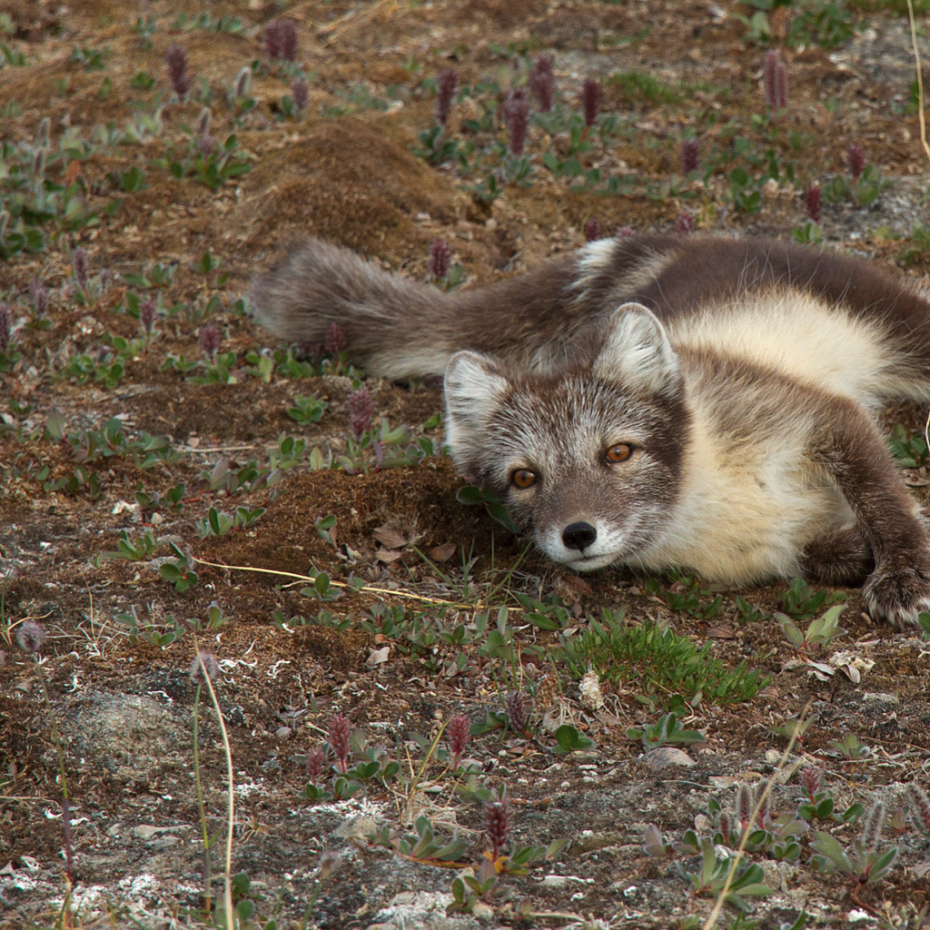
Featured
September 09, 2020 | Arctic Watch
Facts about Arctic foxes, tips on photographing them and the story of one fox who travelled thousands of kilometres (for a date?).
The arctic fox (scientific name: Vulpes lagopus) is a resilient polar dwelling member of the Vulpes (or "true" fox) genus. This small fox inhabits the polar regions in the Northern Hemisphere and is extremely well adapted to living in cold environments. They're small - about the size of a house cat (18 to 27 inches) with a generally round body that is designed to minimize heat loss.
Arctic foxes are extremely curious and similar to polar bears, they survive on the harsh landscapes of the Arctic by constantly investigating their surroundings. A new opportunity often means a new food source. It's not uncommon to see a fox smelling every lemming hole it wanders past; re-visiting a nearby gull rookery or even wandering the shoreline of the Northwest Passage and picking through seaweed.
A fox's diet consist of a variety of small creatures including birds (often eggs and chicks), lemmings, insects, seaweed, carrion, voles and even ringed seal pups. While an arctic fox's diet is highly regional, the base diet is often lemmings. Lemming populations can often dictate the abundance of foxes in a given season (similar to snowy owls). In the winter months, foxes are known to follow polar bears and scavenge leftovers. Arctic foxes will den in complex dens that are usually slightly raised from ground and can be used over multiple generations.
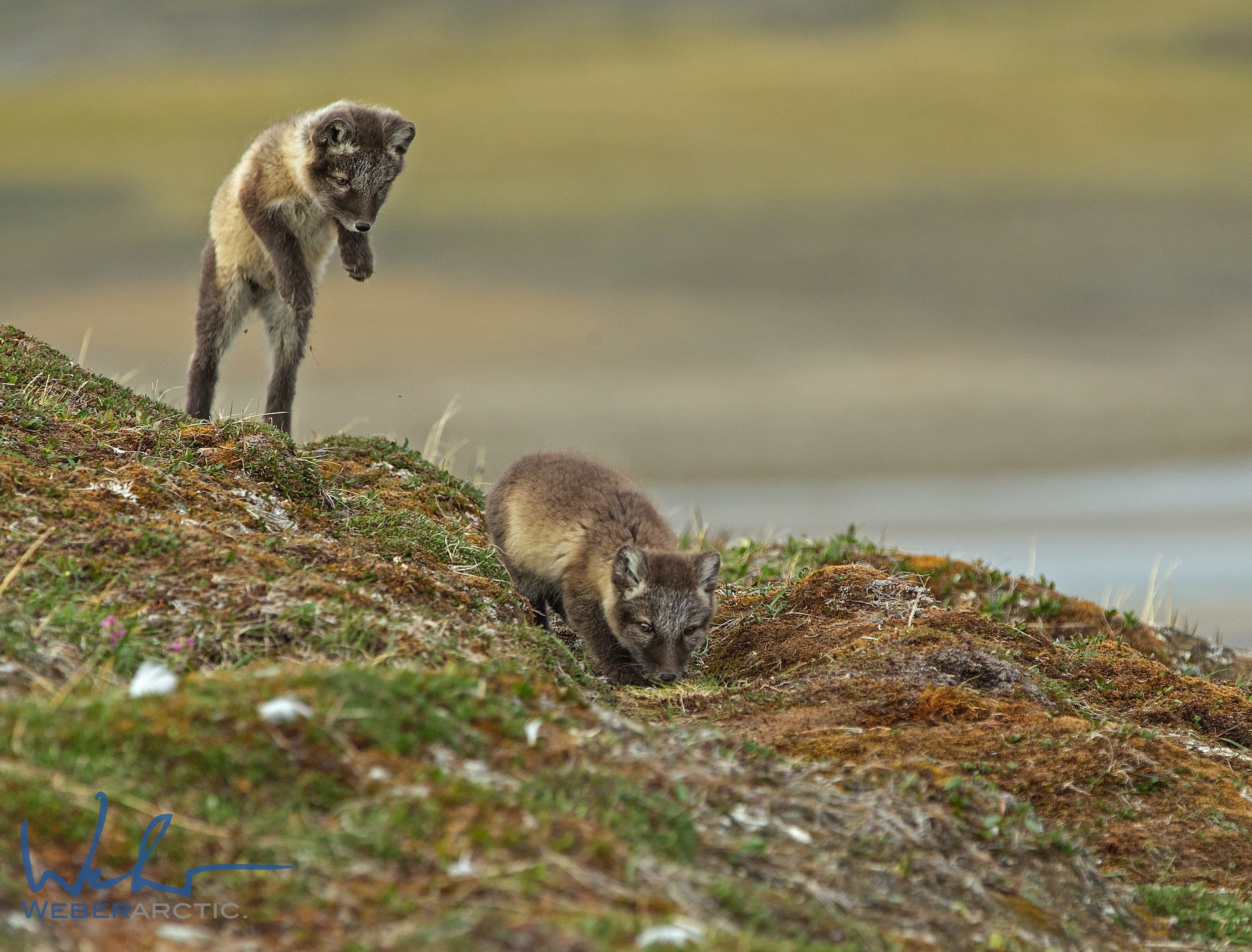
Arctic fox pups tend to remain near the den throughout their first summer, as the mother makes daily "hunting trips" to source food. A mother can have as many as 14 kits (we've seen 13 kits in a litter), with an average being anywhere from three to six young. We've even witnessed at times, multiple families caring for one-another's young.
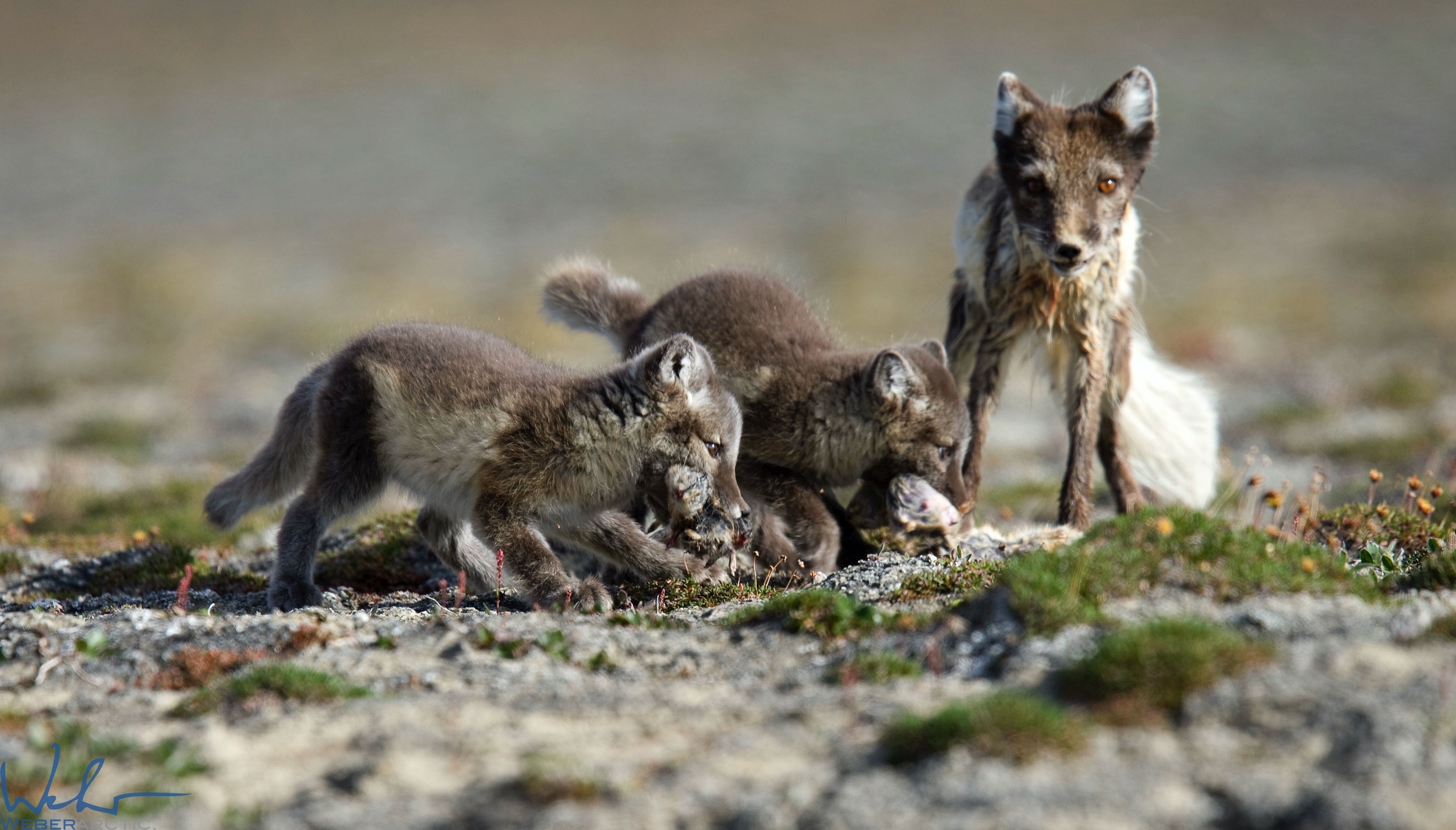
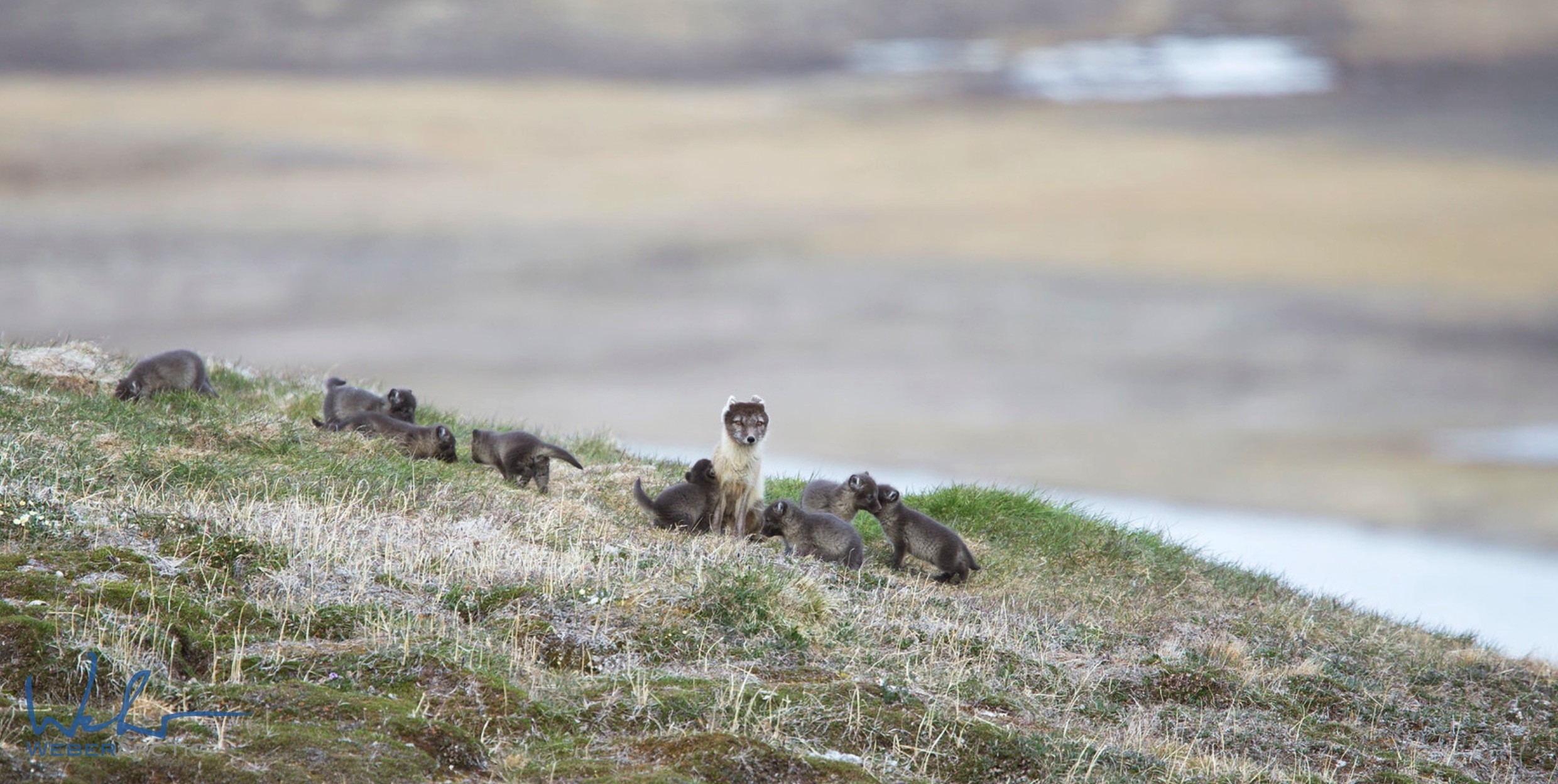
An arctic fox is known to survive temperatures as cold as -60 degrees celsius (only starting to shiver at -70C). They have excellent fur that is multi-layered to provide superior insulation and are they only canid whose foot pads are covered in fur.
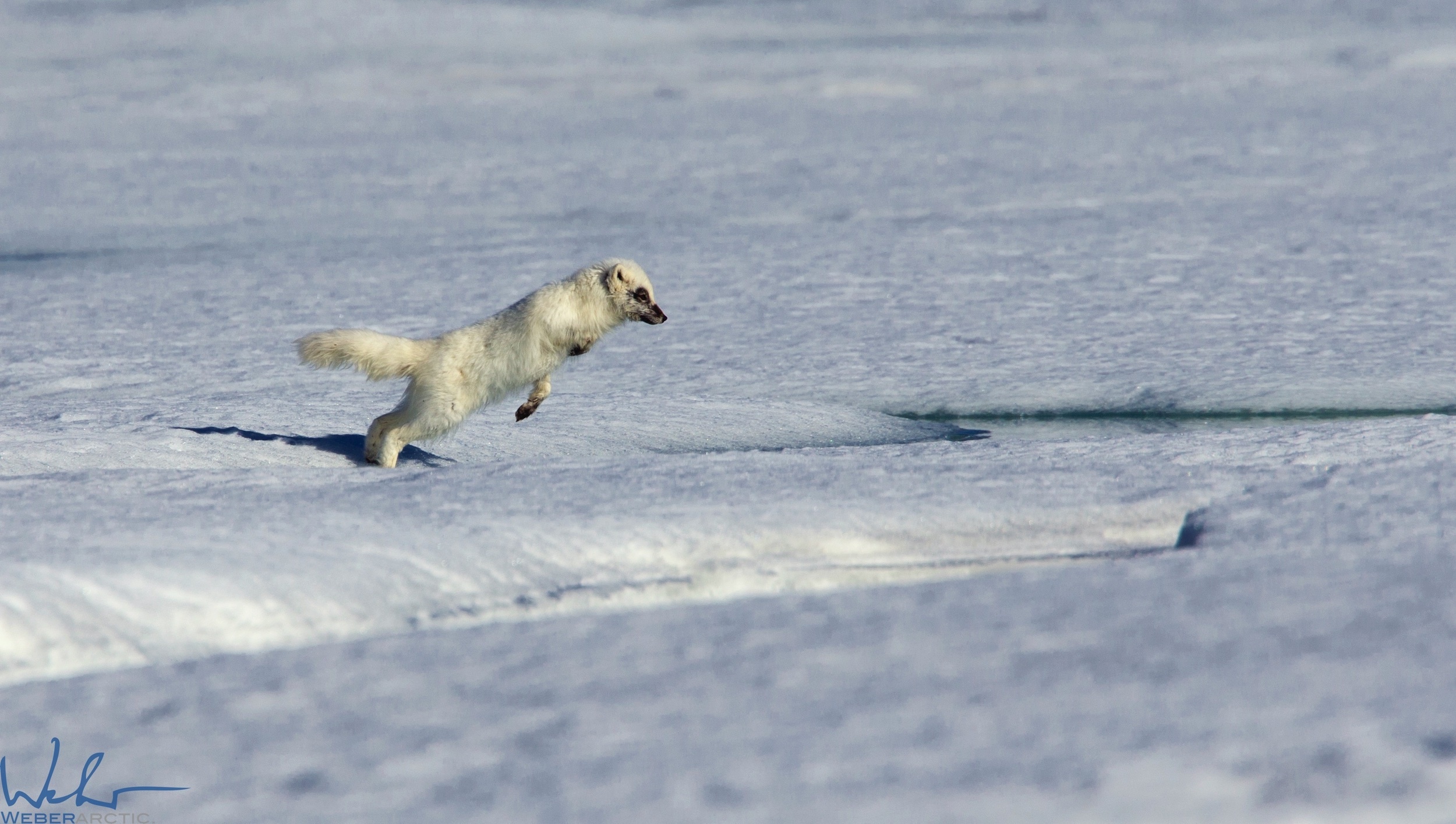
A recent study by the Norweigan Polar Research Institute witnessed a female fox travel more than 4400km from Norway to Canada over the course of 5+ months. She left Norway in March (presumably when the sea ice was thick enough to travel and arrived on Ellesmere Island in Nunavut about July 1st. While the tracker finished recording by this point, one can only guess she was visiting Ellesmere to meet up with a handsome male fox for the summer.
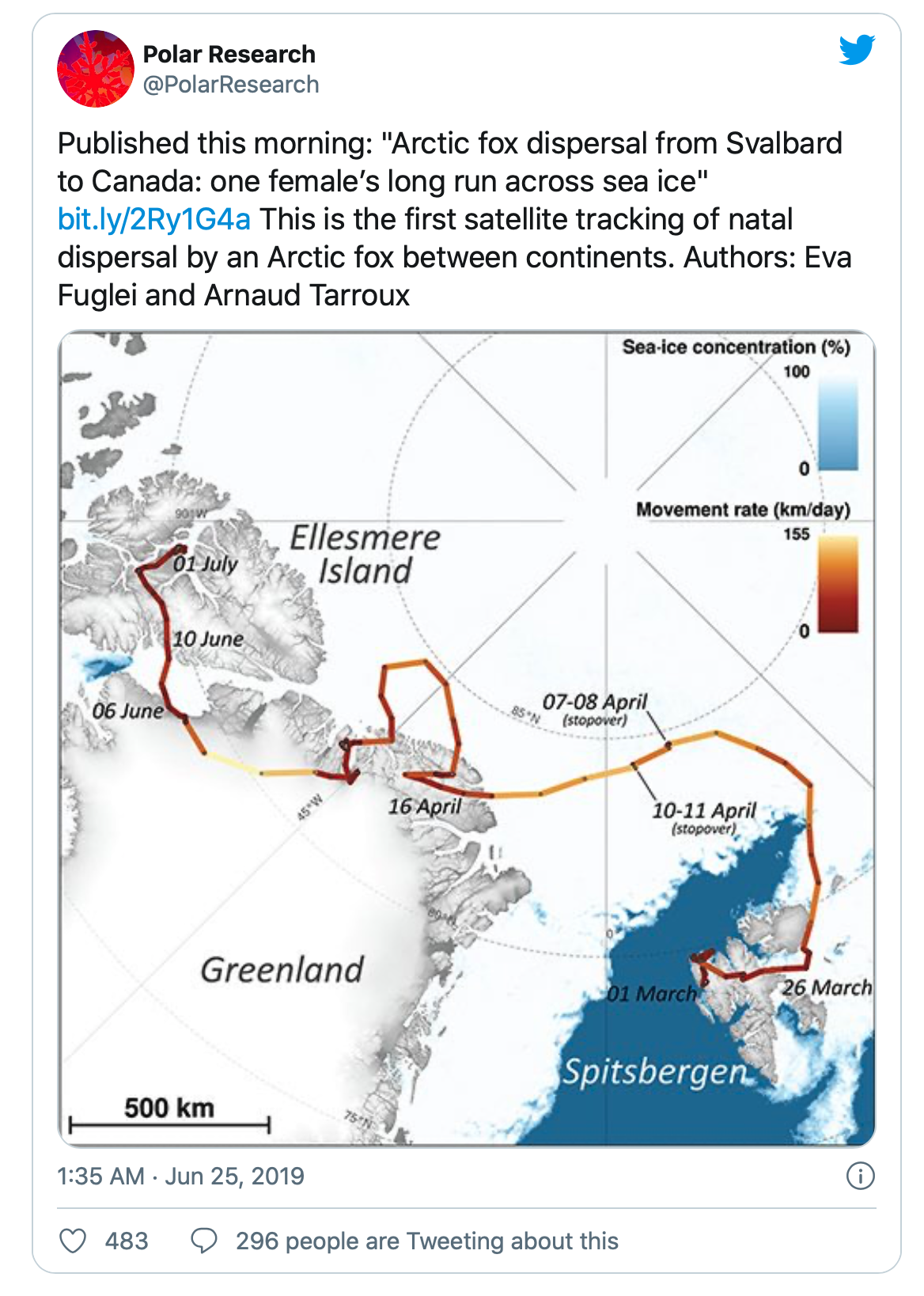
Richard Weber has seen fox tracks on his expeditions to the North Pole: "I've seen tracks on the Arctic Ocean sea ice at 87 degrees north - that's only 300km from the North Pole!".
As with many arctic animals, patience is often the best way to photograph their daily interactions. Denning sites need to be carefully approached (a respectful distance kept to ensure no pressure is put on the den and mother) and pups are often best photographed later in the summer season, when they are more active near the den.
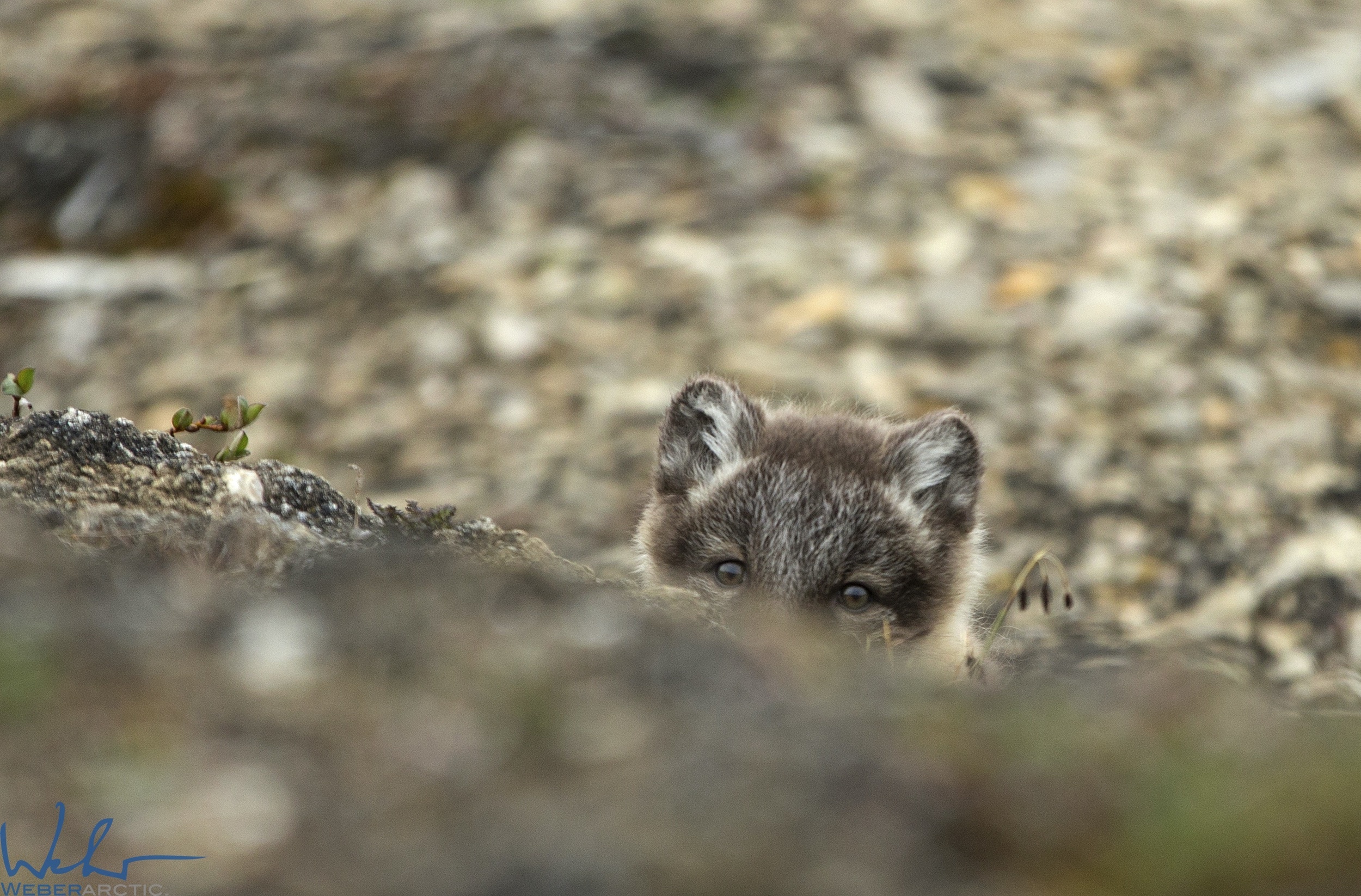
While foxes can be photographed year-around, it is often best to photograph them in summer when denning, as one can not only photograph pups, but capture more interactions between sibling and parent foxes as a result. Winter/spring/fall periods will often only see foxes out hunting; not only have they left the den by this point, but they can be extremely solitary animals during these seasons.
Summer seasons display their curiosity best - one of my favourite moments with an arctic fox was this photo below near Arctic Watch.

One evening at Arctic Watch, at roughly 11PM, myself and another guide were transporting river rafts by Unimog for a raft trip down the Cunningham River the following day. It's an epic rafting trip that requires a significant amount of logistics (hence the midnight mission) for our guests.
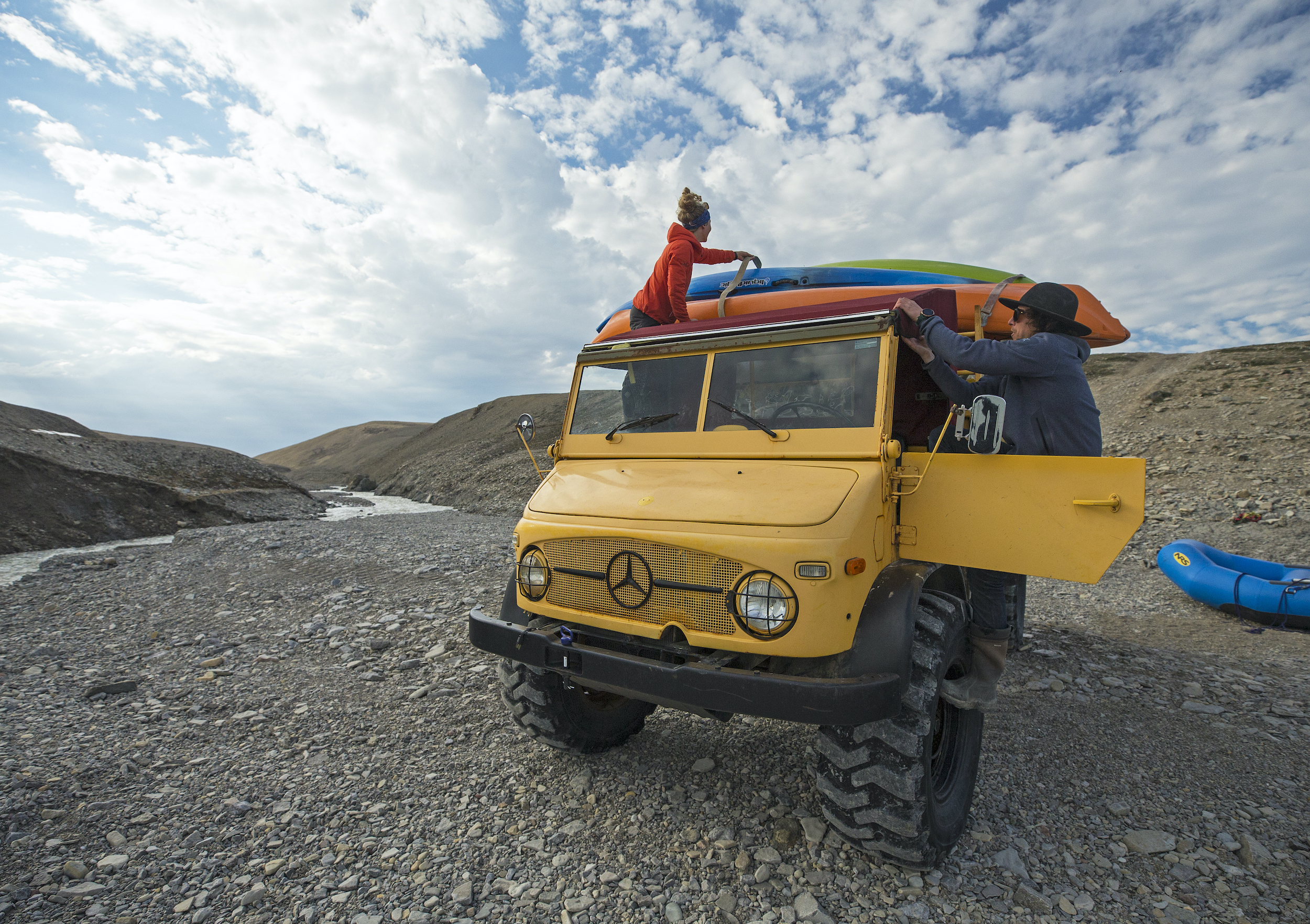
As I was driving the lodge's Unimog down the local trail, a female fox suddenly darted in front of the truck in the most playful fashion - rolling, barking, jumping and dancing in front of us. We immediately stopped and watched her for about 25 minutes as she continued this display. We were well away from her denning site, her pups were at the den (more than 5 kilometres away) and frankly I had no idea why she was displaying these traits. This fox was clearly an extremely playful animal.
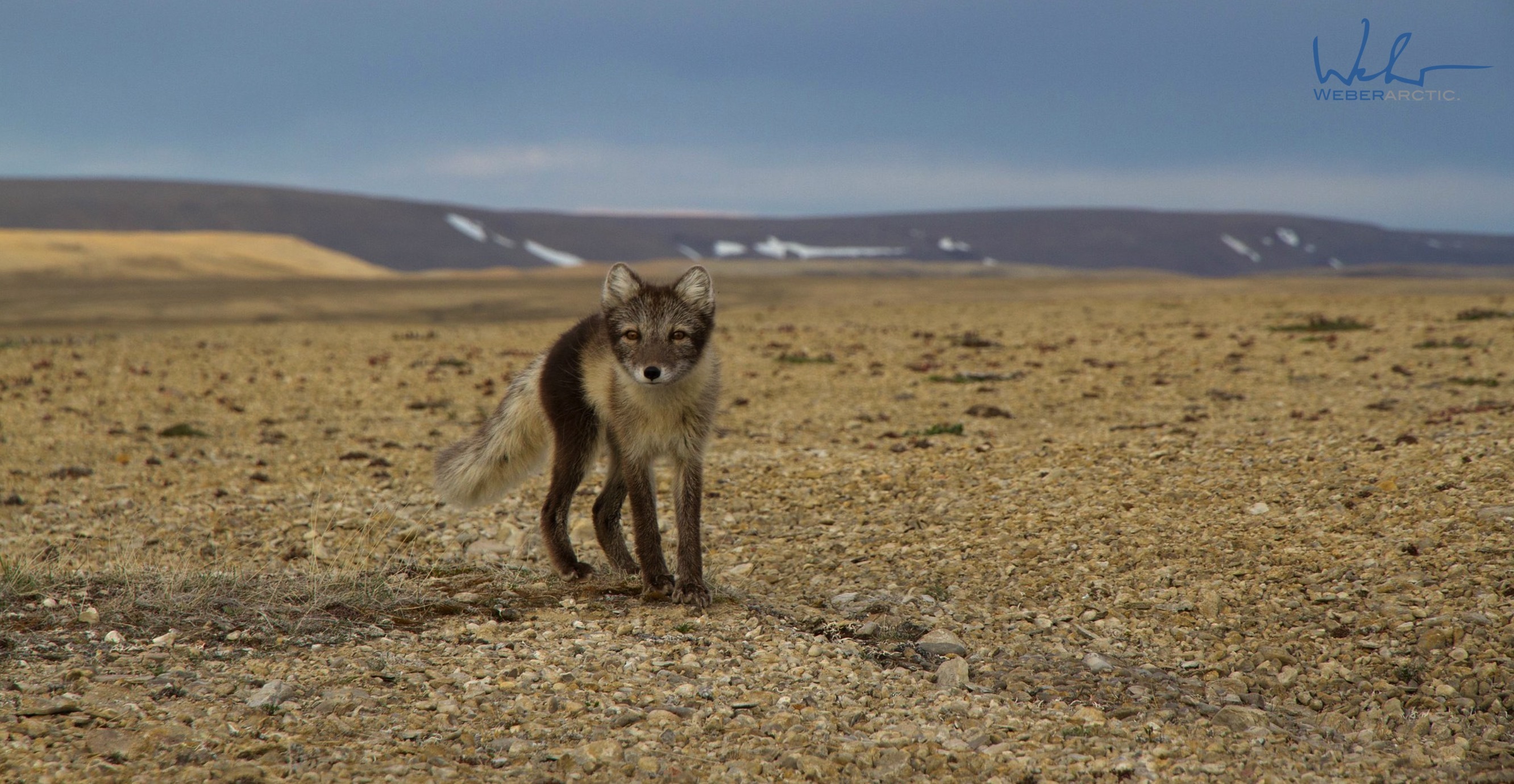
Now by this point, I'm guessing she grew tired of our quiet demeanour and unwillingness to jump, bark roll along with her, proceeding to simply get up and walk away. This photo (above) was her parting glance. One of the most memorable interactions I've ever had, and one that I will never forget!
See arctic foxes at Arctic Watch on our Arctic Discovery or Ultimate Arctic Experience.
We understand that booking a trip like this is a big endeavour. Please reach out to us with any questions that you might have regarding your upcoming adventure.